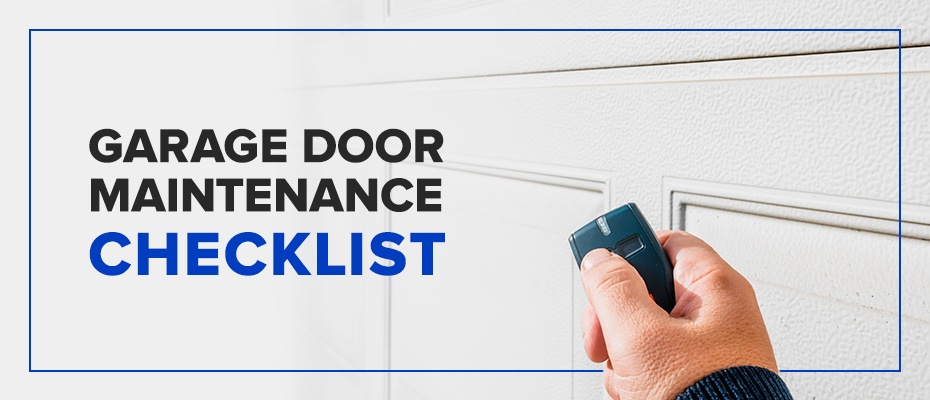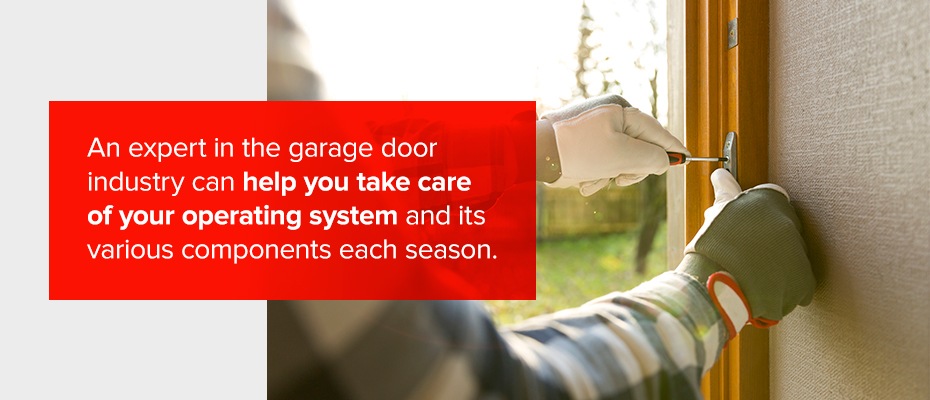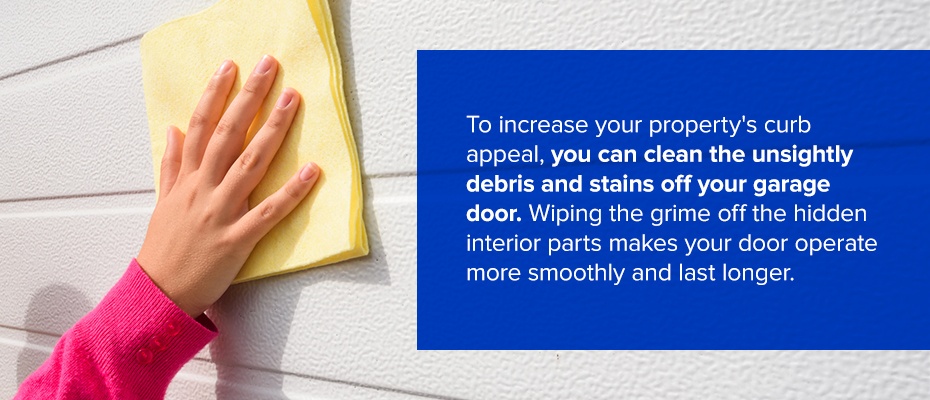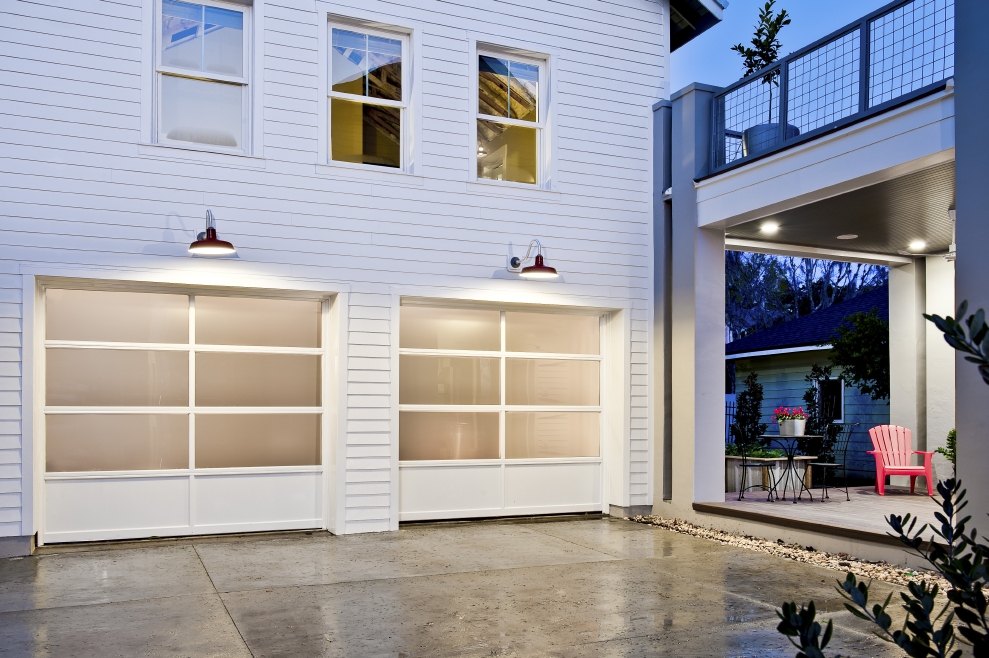
Your garage door is a second entrance into your home, especially if you park your car in the garage, and it makes up a significant portion of the exterior of your property. This system should last for several decades, but you should expect and take care of it every six months to extend its lifespan. Even though you can follow some garage door maintenance DIY projects, you should also consult a professional if you notice any extensive wear and tear on any of the components.
Learn About Our Garage Door Maintenance Services
Why is spring and winter maintenance important for your garage door? Caring for this system increases your property’s curb appeal and helps lower your energy bills during the months with the most extreme temperatures. Use this seasonal garage door maintenance guide to determine what you should be looking for during these inspections.
A few tips to ensure your overhead doors work smoothly for years to come include inspecting and repairing the operating system, washing and painting the door and its components, inspecting the moving parts, testing and repairing the auto-reversal features, inspecting and fixing the garage door opener, and scheduling an appointment with a garage door professional. Here is an in-depth look at each:
Table of Contents
1. Inspect and Repair the Operating System
The garage door opens and closes several times a day, and each cycle puts wear and tear on the system. You should test it out before the weather changes in the new season to avoid being surprised when you try to get inside your home after work. Follow these winter and spring garage door maintenance tips to check its operation:
- Visually inspect your door: Check the front of your door every six months for fading, blistering, cracking or peeling that reduce your home’s curb appeal. Also, watch out for dents or gaps that could bring moisture into the garage and encourage mold growth.
- Open and close the door: Your door should operate without problems when you use the remote or keypad. As you run it, listen for loud noises that indicate a problem with one of the parts. If your entry opens slowly or doesn’t respond at all, consider getting it repaired by a professional.
- Test the door balance: If the door is off-balance, it puts unnecessary pressure on the automatic opener. Check the balance by pulling the release handle on the opener and lifting the door manually until it’s halfway open. If it doesn’t stay up, you need to get it inspected by a professional.
- Inspect the weatherstripping: The seals around your garage door openings prevent unwanted drafts from entering your home so you can have a comfortable temperature all year long. They can also keep moisture from leaking into your door’s components and causing rust. Check the door’s top and sides for tears and rips, and contact a professional to replace the weatherstripping if you notice any gaps.
2. Wash and Paint the Door and Its Components
To increase your property’s curb appeal, you can clean the unsightly debris and stains off your garage door. Wiping the grime off the hidden interior parts makes your door operate more smoothly and last longer. If it has several large dents and scratches, you can also consider applying a brand-new coat of paint to the surface. Check these items off your seasonal garage door maintenance to-do list to give your door an updated appearance:
- Clear the tracks: Clean the debris and rust from the tracks on either side of the door so it doesn’t get stuck as it moves along them. If they’re bent or have stubborn rust or grime, contact a professional to repair or replace them.
- Wash the windows: The windowpanes on your garage door let natural light into your property, but they can get dust and dirt on them. Use an all-purpose glass cleaner and a soft cloth or paper towel to revive your windows’ shine and remove the grime.
- Wash your entire door: Clean the dirt and debris off the panels, weatherstripping and doorstop with a mild detergent and a soft-bristle brush or rag. Rinse the stained and painted surfaces with a low-pressure garden hose to protect the finish.
- Inspect your door and weatherstripping for mold: If you have a wooden door, it can develop mold in humid climates. You’ll have to replace the damaged panels if you discover any signs of moisture damage before it spreads to the rest of the surface.
- Lubricate the moving parts: Apply a synthetic lubricant to the metal components — including the hinges, metal rollers (do not lubricate nylon rollers), lock and keyhole, springs, arm bar and bearing plates — every six months.
- Tighten loose parts: Using your overhead door and opener puts wear on their nuts and bolts. Check and tighten these components around the same time as lubricating them.
- Touch up the paint: Cover up the marks on your garage door’s panels with a fresh coat of paint. You can even use this opportunity to change its color. If it has a finish on it, you should refresh the top layer.
- Organize the garage: When the weather is pleasant outside, you can clean out your garage. Take all the clutter out of your garage and consider installing or reorganizing your shelves to give you more space to put your vehicle and other valuables
3. Inspect the Moving Parts
Your garage door operating system contains various components that allow it to run smoothly. Examine the metal and plastic parts for damage that could further break the door and reduce its lifespan. Here are all the pieces that you should inspect:
- Rollers: Check the rollers along the edge of your garage door and the top and bottom brackets holding them in place for chips or cracks. Even though you can replace these rollers, contact a professional if you need to remove the bottom roller brackets on each side of the door, since they’re under extreme tension.
- Cables and pulleys: Since they’re also under a considerable amount of tension, you should only inspect the cables and pulleys attached to the garage door’s bottom roller brackets with your eyes. If you notice any damage or rips, trust a professional to treat them.
- End bearing plates: These parts are at each end of the spring bar, allowing it to move as the door operates. Check these plates for damage and call a professional to replace them if they look rusted, loose or broken.
- Spring bar: This bar holds the springs and rotates as the door opens and closes. Inspect the spring bar for bending and rust, and consult an expert technician if you notice rust or dents.
- Hinges: The hinges keep your overhead door panels together and allow them to bend as it operates. Inspect the hinges for excessive wear or damage and contact a professional if you need to replace them.
- Vertical tracks: The tracking system can get bent or even fall off the wall, affecting how your door glides on it. If the tracks hinder the door’s opening and closing, you would need to repair or replace them.
- Horizontal track: The garage door rests on this component when it’s fully open, so it’s essential to keep it in working order. Check it for bending, rust or other damage, and fix or replace the garage door track as necessary.
- Jamb brackets: These parts connect the vertical tracks to the framework on either side of the opening. Inspect the jamb brackets to ensure they’re in the correct position and don’t have any dents.
- Strut: The strut mounted at the top of the opening supports the garage door structure.
4. Test and Repair the Auto-Reversal Features
The auto-reversal system sends the door upward if it senses an object in the way of its path. If this feature isn’t working correctly, you could injure someone in your family or damage your valuables. Follow these spring and winter garage door maintenance tips to check the functionality of your safety features:
- Test the photo-eyes: The photo-eye sensors can easily get obstructed and hinder their ability to activate the auto-reversal feature. Test their function by waving an object in front of the beam.
- Clean the photo-eyes: Even an obstruction as small as dust can trigger the photo-eye and keep your garage door open. Use a soft dry cloth to remove dust from the photo-eye and test the door by putting an object in its path.
- Keep objects away from the door: Blockages near the pathway of the photo-eyes can prevent them from controlling your garage door. Avoid putting your belongings near the opening to keep it functioning properly.
5. Inspect and Fix the Garage Door Opener
A faulty opener can increase your energy bills and put extra wear and tear on the door. Follow these garage door opener maintenance tips to keep this component of your operating system running smoothly:
- Test and replace the batteries on the remote: If the remote’s batteries are dead, the door won’t open if you try to use it. Check your remote before each season so you don’t get locked out of your house. Use batteries that the manufacturer recommends.
- Test the backup battery: The opener connects to the home’s electrical system, but it has a backup battery if you lose power. To test it, unplug the opener and try opening the door automatically. You’ll need to replace the backup battery if the opener doesn’t operate.
- Check and replace the light bulbs: The opener comes with light bulbs to help you see in the garage after opening the door at night. If a bulb is loose or not working, replace it with a product that the manufacturer recommends.
- Inspect and repair motor gears: The opener’s motor gears in the belt and chain drive are vulnerable to damage. Inspect the belt or chain for signs of deterioration and check its tension to operate the door properly.
- Check the wire coating: Your garage door contains several wires that connect it to the opener. Visually inspect your wires for any tears or cracks.
6. Schedule an Appointment With a Garage Door Professional
An expert in the garage door industry can help you take care of your operating system and its various components each season. You should call a technician to perform the following services on your operating system, especially if you notice signs of deterioration:
- Add insulation to your garage door: The insulation between the door’s panels helps regulate the indoor air temperature so you can have a comfortable living space and more affordable utility bills. If your garage has drafts or gets too hot in the summer, consider upgrading or contacting a professional to add insulation to your garage door.
- Inspect and replace your broken springs: Let an expert technician check and repair the springs because they can snap and cause injury. During a preventative maintenance appointment, they’ll check the springs for deterioration and rust, and replace them as necessary.
- Check and repair the center bearing: The center bearing holds the torsion springs in place, but it can become worn out or broken, and the springs could snap. The technician will check these pieces during the inspection to prevent you from hurting yourself if the springs break.
- Inspect and fix the center bracket: If the center bracket is bent or has any abnormalities, you would need to replace it. This part supports the torsion springs and allows them to operate without breaking, so you should let a professional handle it instead of putting yourself at risk.
- Replace your garage door opener: If replacing the batteries or checking your electrical connection doesn’t fix your opener, you might need to replace it. An expert technician can inspect your system and suggest an upgraded model for your property.
- Repair your garage door: If the dangerous or complicated components of your garage door need fixing, or it’s not working, request garage door repair services from a local professional. They’ll know how to diagnose the issue and let you know what you need to repair.
- Replace your garage door: An expert technician can also tell you if your system has failed beyond repair. It might be a better investment to replace the whole thing instead of repairing the one you already have.




